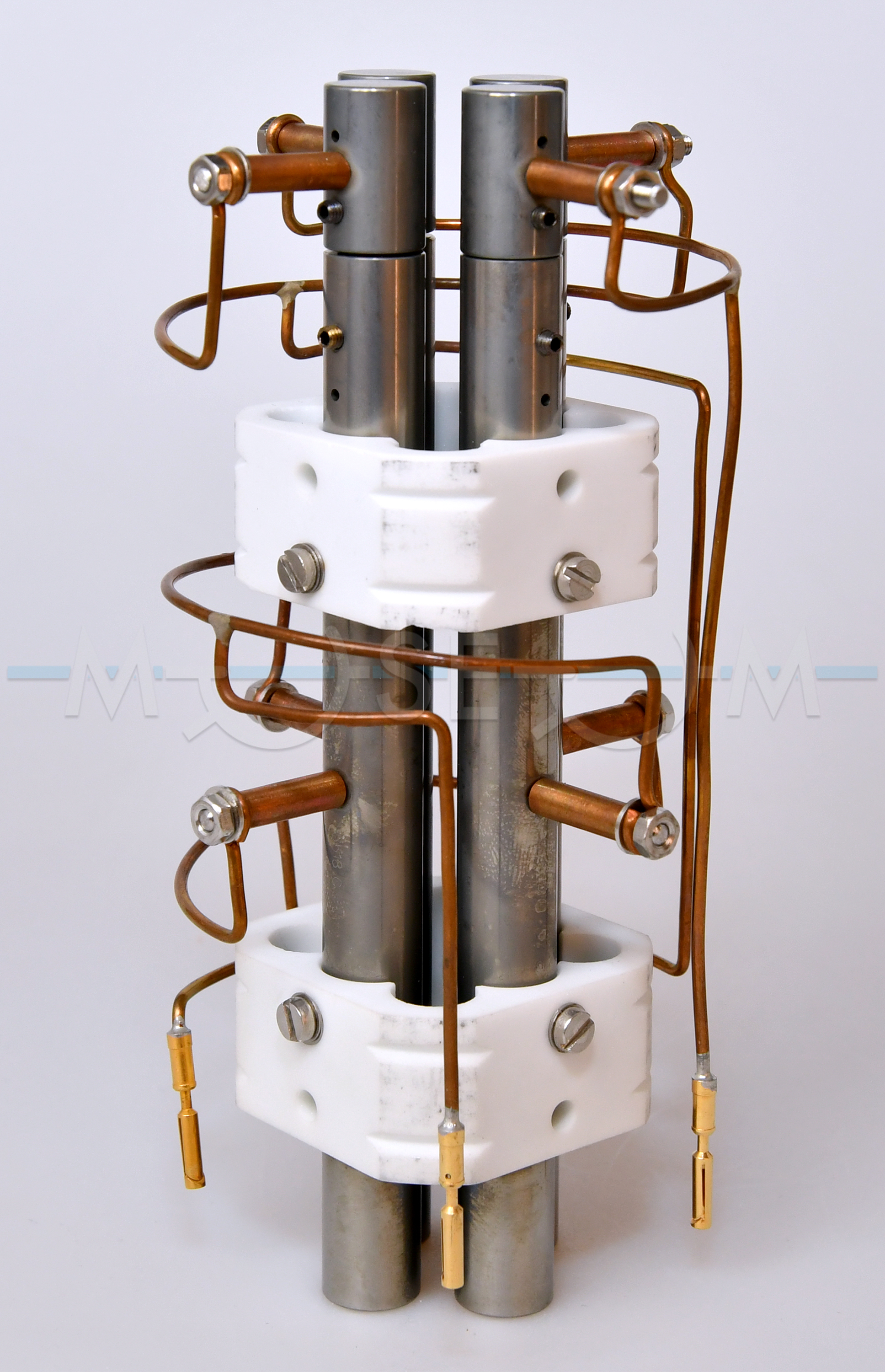Categories of exhibits
Quadrupole with prefilter
Exhibit no. 653
The quadrupole mass analyzer separates ions based on the stability of their trajectories in the oscillating electric fields. It consists of four parallel rods with a hyperbolic or circular cross-section. Typical rod diameters are between 5 and 12 mm with rod lengths between 100 and 200 mm. The opposing quadrupole rods are connected together electrically, and a radio frequency (RF) voltage and a DC voltage is applied between one pair of rods and the other. Quadrupole mass analyzers are usually operated at a fixed frequency typically between 1 and 10 MHz. Within the region between the rods, the quadrupole electric field affects the motion of the ions in the XY plane, while the ion motion along the Z-axis is not affected. The quadrupole mass analyzer acts as a mass filter. Only ions of a certain mass-to-charge ratio will reach the detector for a given ratio of RF and DC voltages: other ions have unstable trajectories and will collide with the rods. This permits the selection of an ion with a particular m/z or scanning for a range of m/z-values by continuously varying the applied voltage. The quadrupole mass analyzer was developed in parallel with the quadrupole ion trap by the Nobel prize-winning mass spectrometry pioneer, Wolfgang Paul.
The exhibit is a quadrupole mass analyzer from the GC/MS detector MD800 manufactured by Fisons in the 1990s. It consists of four accurately machined and precisely aligned metal rods in ceramic holders. The quadrupole rods are equipped with prefilter rods at the entrance. The prefilter was used to eliminate the negative effects of the fringing field and thereby increased ion transmission. The prefilter rods had two thirds of the RF voltage and none of the DC voltage of the main rods, and it was at -5 V relative to earth to attract the ions into the analyzer. The prefilter also prevented direct contamination of the quadrupole. The analyzer was designed for the m/z range of 10 – 800.
Wikipedia: Quadrupole mass analyzer
Wikipedia: Wolfgang Paul





